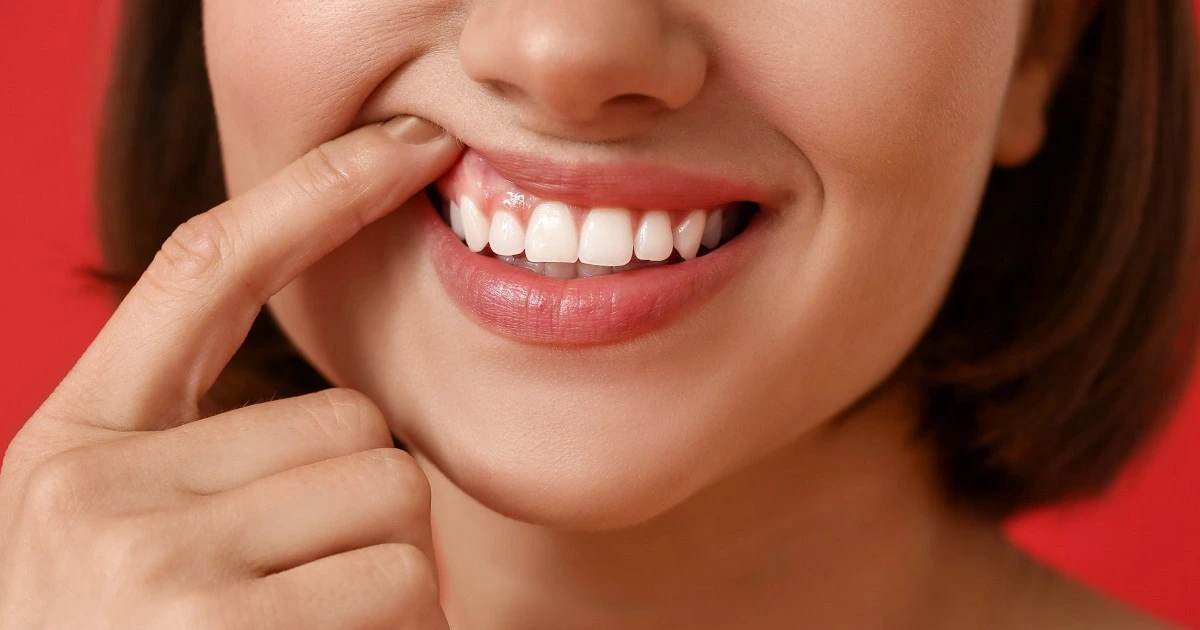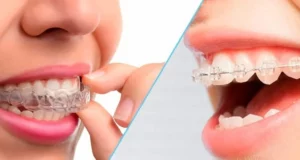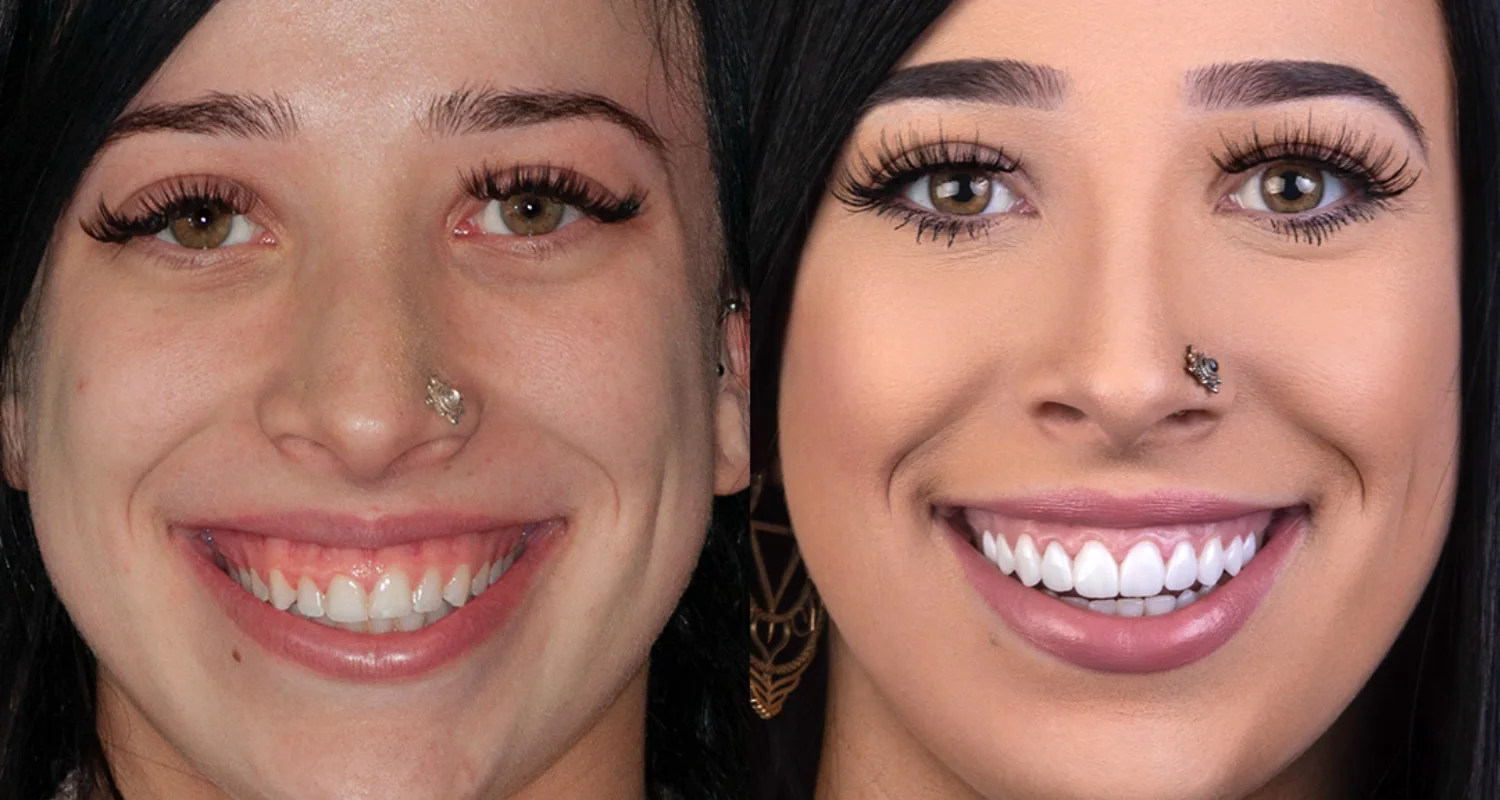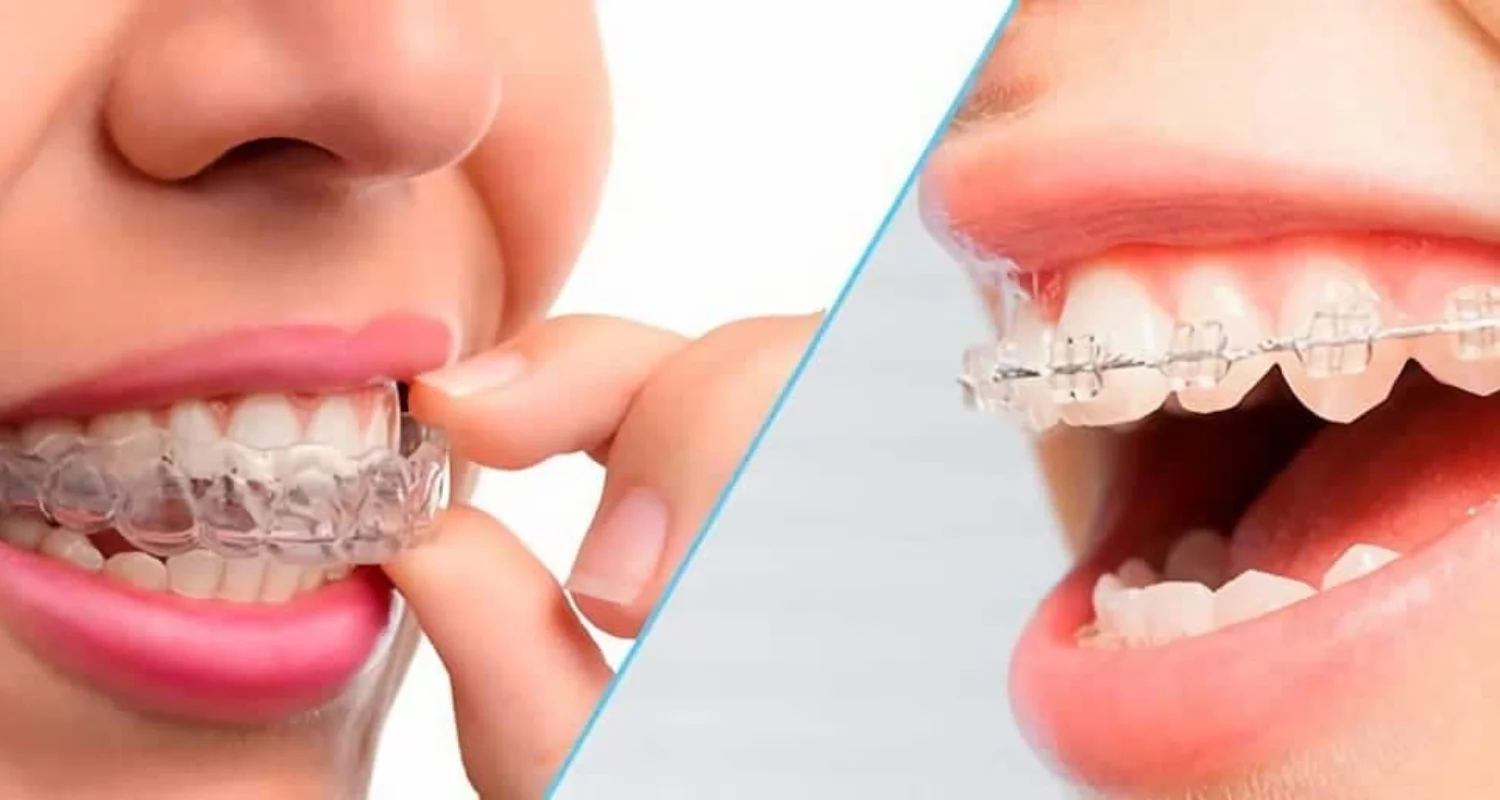Last Updated on: 11th June 2024, 12:06 pm
✓ Fact Checked 🕓
❙ Our team of writers, editors, and medical experts rigorously evaluates each article to ensure the information is accurate and exclusively cites reputable sources.
❙ We regularly assess how the content in this article aligns with current scientific literature and expert recommendations in order to provide the most up-to-date research.
In the vast world of aesthetic dentistry, the benefits of gum contouring emerge as a crucial factor in achieving dazzling and harmonious smiles. Oral health goes beyond the teeth, which is why the gums play a fundamental role in the overall appearance and function of the mouth. Many people may feel dissatisfied with their smile due to gum overexposure or a gum line with uneven edges. Fortunately, there are dental procedures to reshape the gums and create more visually pleasing smiles.
What Exactly is Gum Contouring?
For a harmonious smile, the proportion of teeth and gums exposed when smiling must be balanced. Gum contouring is a set of procedures that have the objective of modifying the shape of the gums, equalizing their contour, until giving a more symmetrical and beautiful appearance. These can include trimming or repositioning of the gums, and even grafting of gum tissue in areas where recessions exist. If you’re interested in learning more about gum contouring, feel free to explore this article.
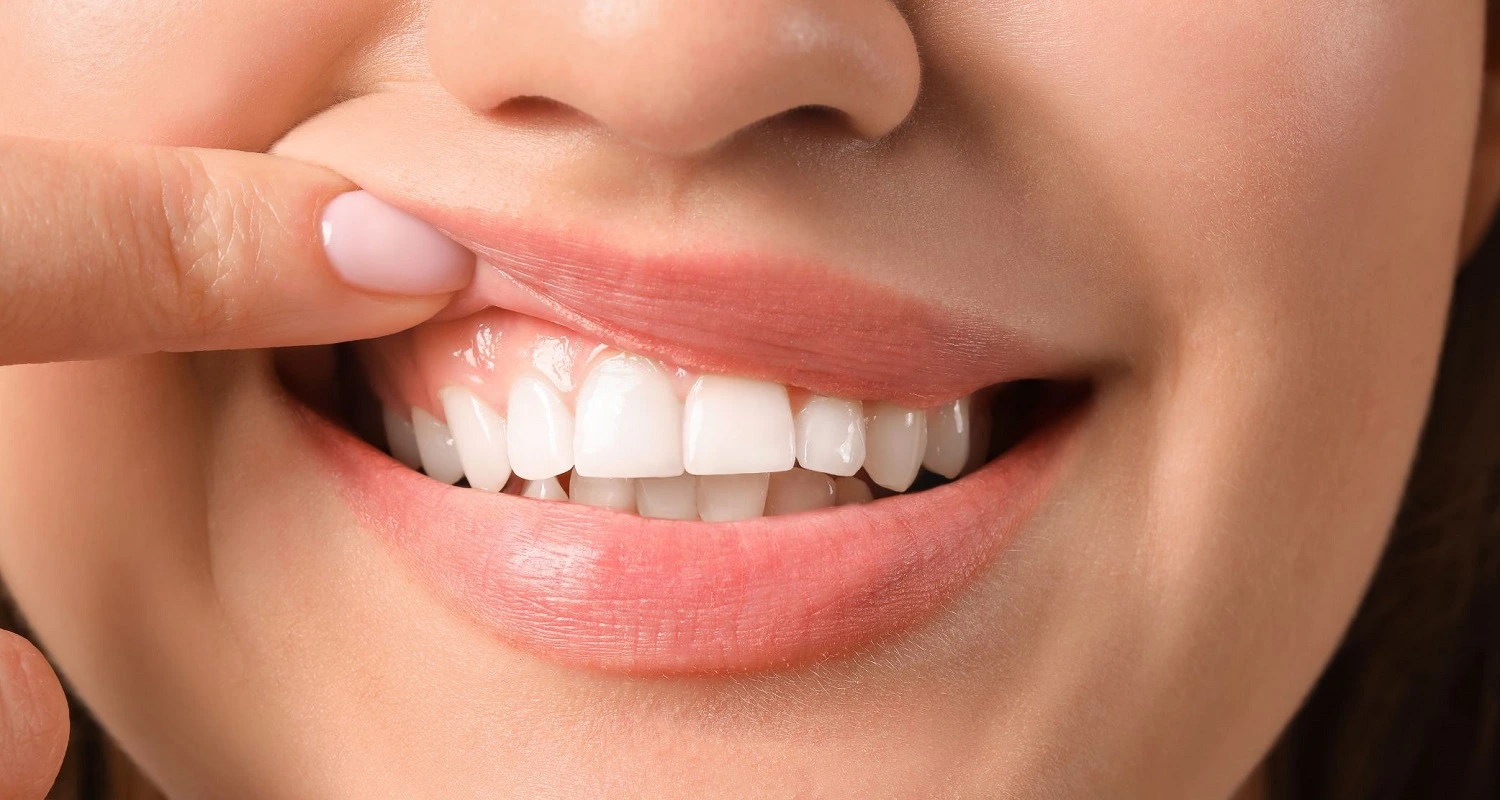
How is a Gum Contour Performed?
1. Previous study
Before performing the procedure, the professional in charge of the procedure will proceed to take photos and occasionally, an intraoral scan. This will allow an evaluation of the smile and establish treatment objectives according to the expectations of the patient.
2. Planning and taking measures
The dentist will take measurements and make marks in the areas where he will make the cuts, so as not to remove more tissue than necessary. Sometimes, it is not enough to remove the gum and it is necessary to slightly cut the bone that is under it, to give the desired shape.
3. Gum Trim
This can be done with a conventional scalpel, electrocautery, or laser, which provides the possibility of making very precise cuts to achieve the expected results. If this step is done with a laser, no stitches will be required, while if it is done with a scalpel, they will likely be necessary.
Eventually, the gum contour may require the placement of gum grafts, which are taken from other areas of the mouth of the same patient and sutured in the required area.

How do the Benefits of Gum Contouring Enhance the Appearance of My Smile?
The contour of the gums plays an essential role in the general aesthetics of the smile and, therefore, in the facial appearance. A harmonious and well-proportioned gum line can have a significant impact on the way patients perceive their smiles. When the gums are balanced in height and shape around the teeth, an ideal framework is created that enhances the natural beauty of the teeth and lips.
An irregular gum contour, where some gums stick out more than desired or cover the teeth too much, can make teeth look small, uneven, or even misaligned. Using gum contouring techniques, dental professionals can correct these imperfections and improve the symmetry and proportion between the gums and teeth.
Is the Contour of the Gums Painful?
Gum contouring procedures are performed under local anesthesia, and in some offices, the conscious sedation service is offered to reduce the stress produced by surgery. In the following hours, it is likely that the patient will perceive numbness in the area. Normally, professionals prescribe medication for the first few days to control pain and inflammation, in addition to other measures such as applying ice to the area.

How Long Does It Take to Recover from the Gum Contour?
The recovery of a gum contour can take between one and two weeks, during which the patient will be able to carry out most of their daily activities without problem. You likely feel very sensitive, so it is recommended to make adjustments in your diet, trying to eat soft and not-so-irritating foods.
The foods that should be consumed and those to be avoided after wisdom tooth extraction and gum contouring procedures are quite similar. To learn more about these dietary recommendations, click here.
Can Gum Contouring Improve Gum Health?
Although most of the time gum contouring is an aesthetic and elective procedure, sometimes it is part of necessary periodontal treatments, such as crown lengthening to facilitate the placement of fixed prostheses, the reduction of periodontal pockets (which constitute an infectious focus ) or regenerative procedures.
The gum contour is also used when gingival recessions occur, where part of the roots of the teeth is uncovered, causing, in addition to an aesthetic problem, greatly increased dental sensitivity. In these cases, grafts are made to cover dental surfaces that should not be exposed to the oral environment.
Gum contouring can effectively aid in preventing gum disease by addressing concerns like excess gum tissue or uneven gum lines, which could otherwise lead to oral hygiene issues.
Can Anyone Have a Gum Contour?
Gum contouring can be the solution for a large part of the patients who come to the clinic and are dissatisfied with their smiles. However, this is not indicated in all cases. Many times the defects are so large that they require orthognathic surgery to correct them. In the same way, a gum contouring procedure might not be indicated in patients who have very short tooth roots, since reducing the proportion of tissues that support the tooth, could predispose to its loss. If you’re interested in getting this treatment, it’s beneficial to know how much gum contouring costs first.
Conclusion
An improved gum contour can transform the way your smile presents itself to the world. If you are concerned about the proportion or symmetry of your gums and teeth, consulting a cosmetic dentist will allow you to explore options for a more balanced and radiant smile.
Frequently Asked Questions
Who is suitable for gum contouring?
During your first consultation with your dentist, your smile will be examined to ensure that it meets the necessary requirements for this procedure. This usually implies that at least one of the following problems is present: An irregular gum line. A fractured tooth that requires a dental crown, but has excess gum tissue.
What precautions should I take after gum contouring?
It is important to avoid hard or crunchy foods, as well as those with small seeds that can get trapped under the gums. It is suggested to opt for a diet of soft foods such as yogurt, pasta, ice cream or eggs during the first days after the procedure. Also, you may need to adjust your brushing and flossing techniques during the healing period.
What possible complications can there be with gum contouring?
Before undergoing contouring surgery, it is essential to understand that there are associated risks, such as infections or damage to the soft tissues of the mouth, such as nerves and blood vessels. Your dentist will likely numb your gums with a local anesthetic before performing the contouring procedure.
Is it safe to exercise after gum contouring?
After the procedure, it is recommended that you take the rest of the day easy. You can return to work the next day, but avoid strenuous exercise, such as heavy lifting. You will be able to return to the gym after a week.
Share:
References
1. Burch, K. (Aug 23, 2022). Everything you need to know about gum contouring. Verywell Health. https://www.verywellhealth.com/gum-contouring-5323782
2. Cosmetic recontouring. (s/f). Mayodentalclinic.com https://www.mayodentalclinic.com/services/cosmetic/cosmetic-recontouring/
3. Gum contouring. (Aug 22, 2023). Cleveland Clinic. https://my.clevelandclinic.org/health/treatments/25208-gum-contouring
4. Gum contouring. (Sep 14, 2021). WebMD. https://www.webmd.com/oral-health/gum-contouring-procedure
5. Narayanan, M., Laju, S., Erali, S. M., Erali, S. M., Fathima, A. Z., & Gopinath, P. V. (2015). Gummy smile correction with diode laser: Two case reports. Journal of International Oral Health : JIOH, 7(Suppl 2), 89.
6. Bhardwaj, P., & Singh, D. (2021). Smile Designing: The Aesthetic Architecture. Journal of Applied Dental and Medical Sciences, 7, 2.


